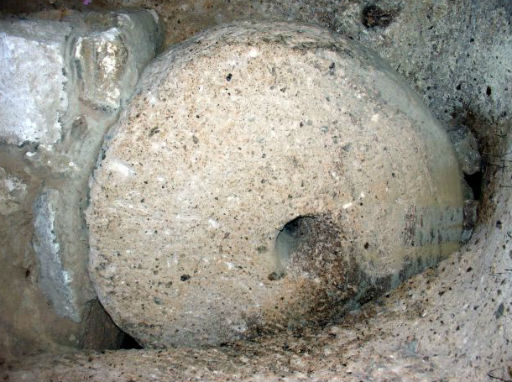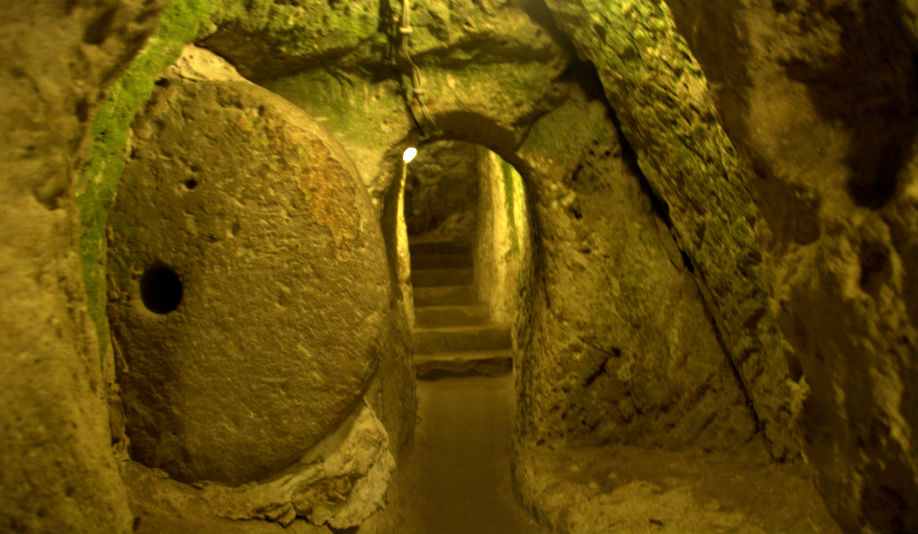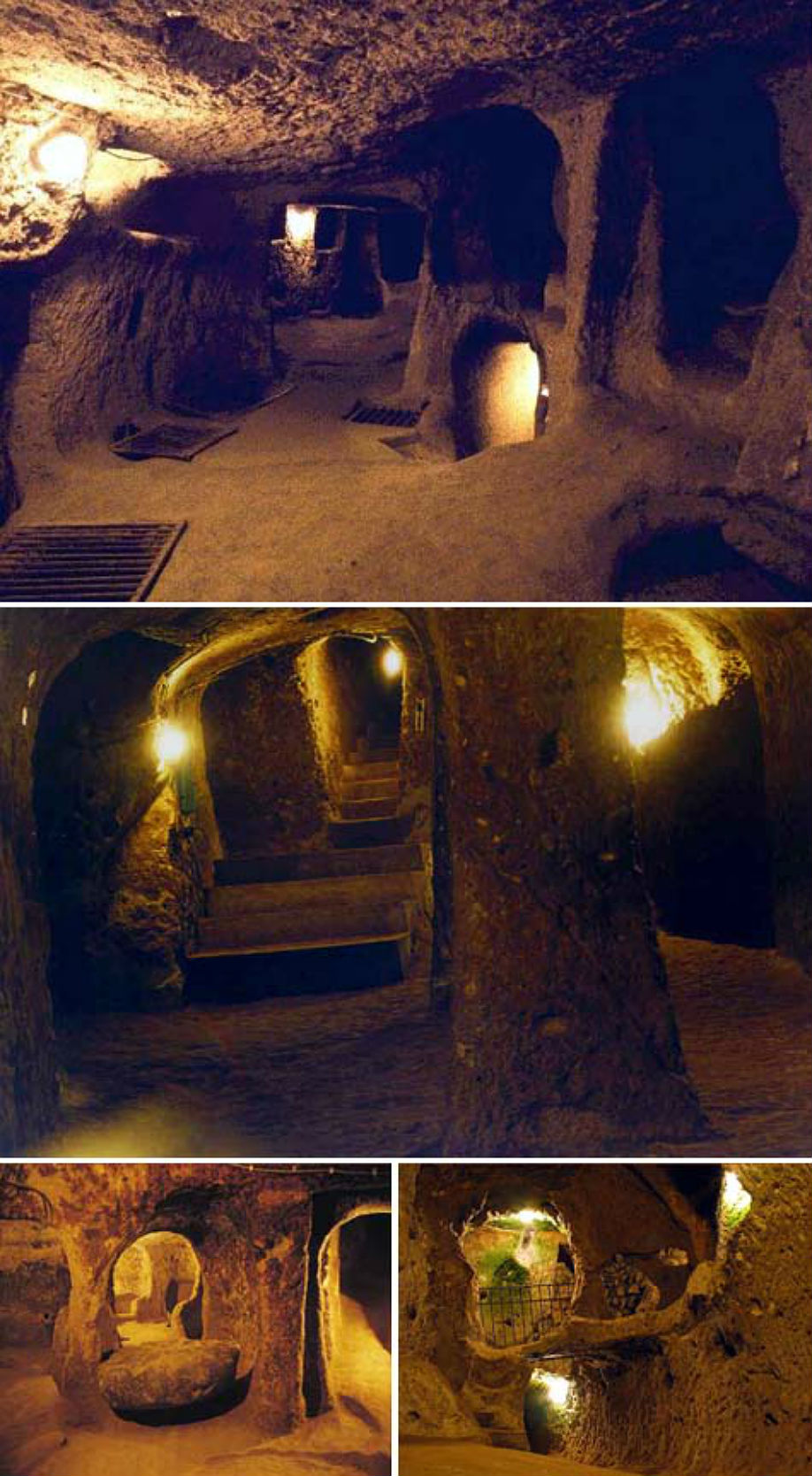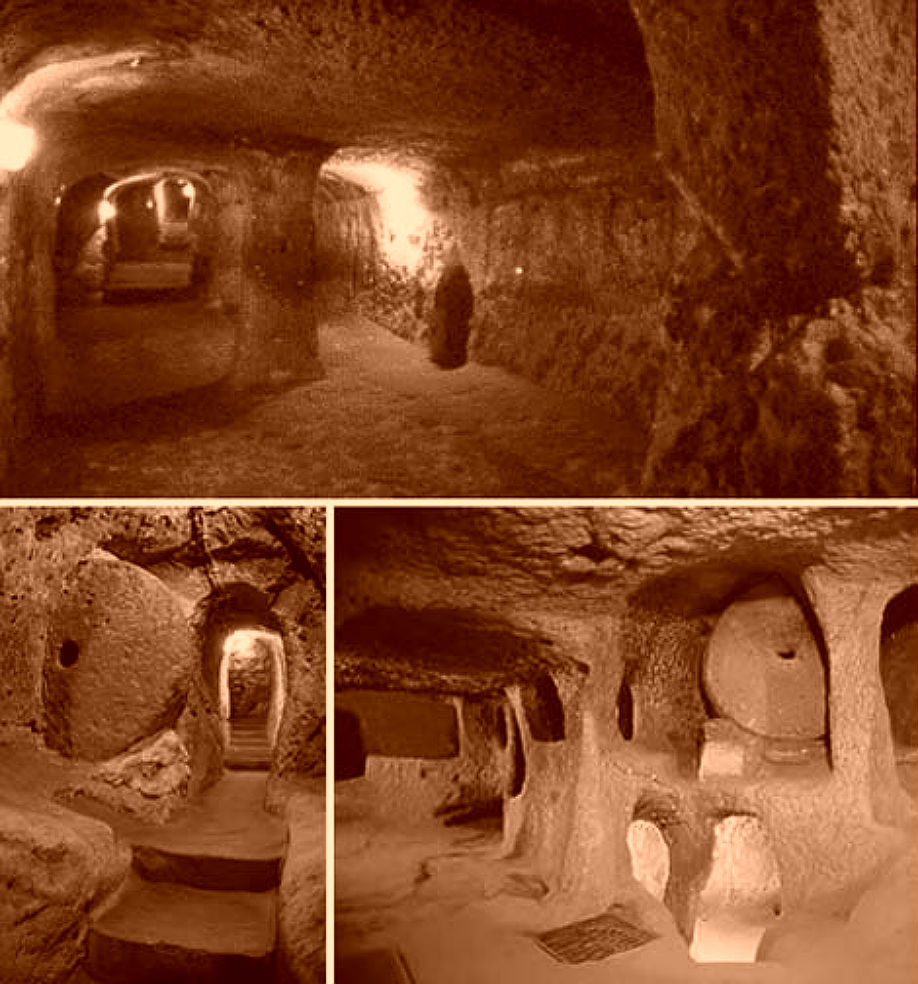Derinkuyu Underground City is an ancient multi-level underground city of the Median Empire in the Derinkuyu district in Nevşehir Province, Turkey.
Extending to a depth of approximately 60 m, it was large enough to shelter approximately 20,000 people together with their livestock and food stores.
It is the largest excavated underground city in Turkey and is one of several underground complexes found across Cappadocia.

One of the heavy stone doors. They have a height of 1–1,5 m, 30–50 cm in width and weigh 200–500 kg. The hole in the centre can be used to open or close the millstone, or to see who is outside.
It was opened to visitors in 1969 and to date, about half of the underground city is accessible to tourists. The underground city at Derinkuyu could be closed from the inside with large stone doors. Each floor could be closed off separately.
The city could accommodate up to 20,000 people and had all the usual amenities found in other underground complexes across Cappadocia, such as wine and oil presses, stables, cellars, storage rooms, refectories, and chapels. Unique to the Derinkuyu complex and located on the second floor is a spacious room with a barrel vaulted ceiling. It has been reported that this room was used as a religious school and the rooms to the left were studies.
Between the third and fourth levels is a vertical staircase. This passage way leads to a cruciform church on the lowest (fifth) level.
The large 55 m ventilation shaft appears to have been used as a well. The shaft also provided water to both the villagers above and, if the outside world was not accessible, to those in hiding.
History
First built in the soft volcanic rock of the Cappadocia region, possibly by the Phrygians in the 8th–7th centuries B.C according to the Turkish Department of Culture, the underground city at Derinkuyu may have been enlarged in the Byzantine era. During the Persian Achaemenid empire the city was used as a refugee settlement. There are references to underground refugee settlements built by the Persian king Yima in the second chapter of the Zoroastrian book Vendidad. Therefore many scholars believe that the city may have been built by the Persians. The city was connected with other underground cities through miles of tunnels.
Some artifacts discovered in these underground settlements belong to the Middle Byzantine Period, between the 5th and the 10th centuries A.D. It is speculated that the number of underground settlements, generally used for taking refuge and for religious purposes, increased during this era.
Derinkuyu Underground City, Cappadocia,





Totally loved the underground multileveled city complex; it is completely self-sufficient and full of interesting history. However, there are moments of discomfort as the tunnels are small and cramped, and many times, we had to bend over, even crouch, to get through the tunnels or to enter a small room, etc.
Take at least three days if you can. The highlight was an early morning balloon ride. Not sure there is anything like it elsewhere.
Even though visitors are admitted only to a limited proportion of this underground network of caves, tunnels and ventilation shafts, it is amazing. And the implications of actually inhabiting the caves are tough to fully appreciate. Just be careful to bend very very low in places and not to think about being confined in a small space.
Sleeping in a traditional cave room was my first time in my life. The furniture was also traditional. But other amenities were quite modern. The bathtub even had spa jets so I had a very comfortable bath after one day tour.
Visit small pottery suvenior shops and do pottery to have a great time.
The city is full of narrow stone tunnels and steps that go down. It has a long history, apparently going back 4,000 years, includes some period where it was used by Christians.
If you're claustrophobic, have breathing difficulties, or have related allergies then you won't be able to make it here. Also, if you're tall or heavy-set then you'll have…
A very nice place, you have to take the balloon and fly over the mountains. It was an amazing experience. The Musseum Hotel is great, the rooms into the stones are wonderful.
After visiting Hacibectas, our driver took the five of us to Avanos. First we had lunch at the Kooperative, a restaurant operated by a group of Turkish women. Great food. Then we spent a couple of hours at Chez Galip- pottery museum. We spent so much time there that it was too late to go to Hair Museum cave.
Everthing we saw in Cappadocia was just wow! What an incredible vista, almost surreal. How to use the natural lanscape to live in. The whole area and its sights are a must visit.
This would be a better experience if there weren't so many other people wanting to see this amazing underground city of 8 levels at the same time as you!!! There is a sign outside saying it is not suitable for people with claustrophobia, heart conditions or asthma.